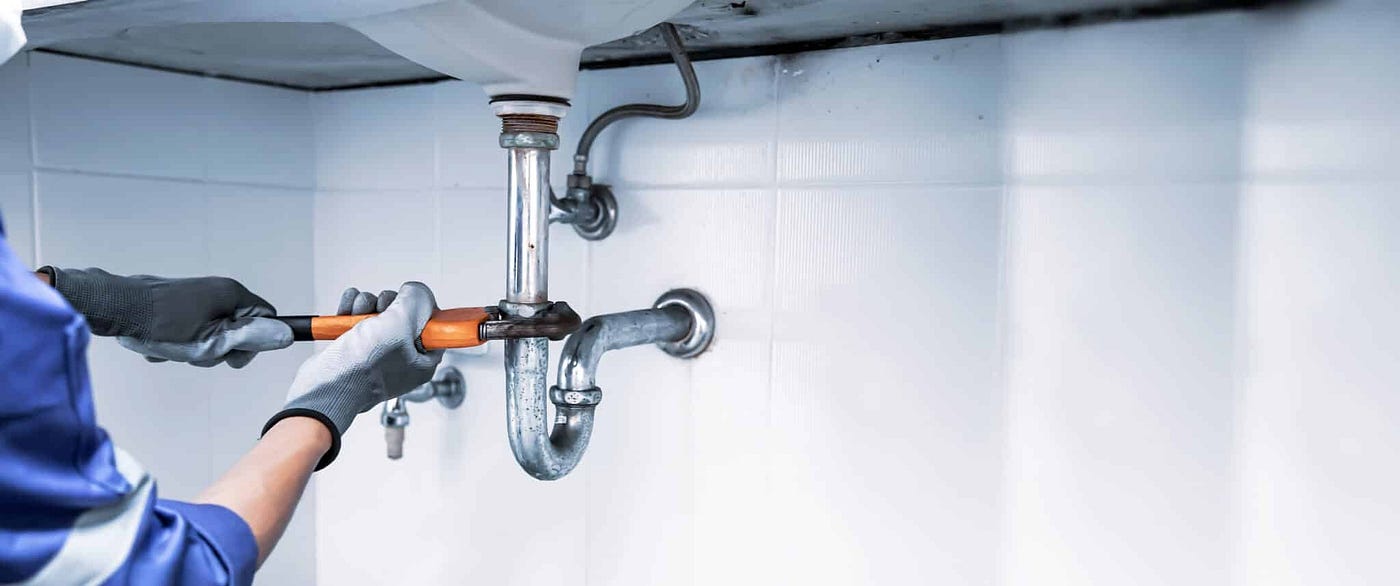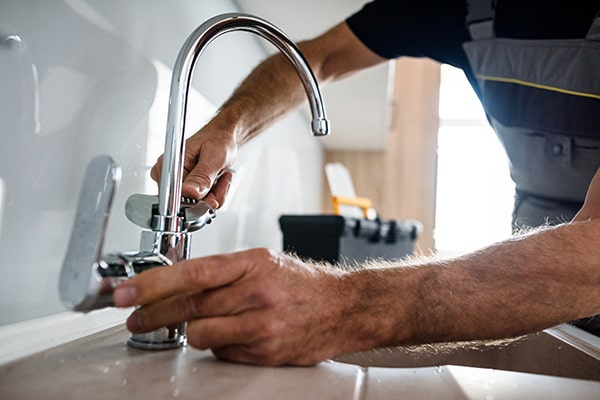Exploring The Future of Plumbing: Trends and Innovations
Exploring The Future of Plumbing: Trends and Innovations
Blog Article
What are your beliefs about The Future Of Plumbing: Trends And Technologies To Watch?

Intro
The pipes sector is undergoing a transformative phase driven by technological improvements and expanding problems for sustainability and effectiveness. This article explores arising trends and technologies shaping the future of pipes.
Smart Plumbing Solutions
Integrating smart innovation right into plumbing systems makes it possible for remote surveillance, leakage discovery, and automated upkeep. Smart sensing units and IoT (Web of Points) tools permit property owners and plumbings to monitor water use and detect problems in real-time, causing much more reliable source management and positive upkeep.
Water Effectiveness Solutions
With boosting focus on water conservation, innovative remedies are being developed to minimize water wastefulness in plumbing systems. High-efficiency components, greywater recycling systems, and clever watering controllers are amongst the technologies assisting consumers decrease their water impact while keeping comfort and convenience.
Lasting Products
The shift in the direction of sustainability encompasses plumbing materials, with an expanding preference for environment-friendly options. Biodegradable piping materials, such as PEX (cross-linked polyethylene) and HDPE (high-density polyethylene), offer longevity and resistance to rust without jeopardizing ecological honesty.
Predictive Maintenance
Anticipating upkeep techniques take advantage of information analytics and artificial intelligence formulas to prepare for and avoid pipes concerns before they occur. By examining historical data and performance metrics, predictive upkeep algorithms can determine patterns and abnormalities, enabling proactive treatments to prevent pricey fixings and interruptions.
Increased Reality in Pipes
Augmented Truth (AR) innovation is transforming pipes by supplying service technicians with real-time aesthetic support for fixing and repair work jobs. AR-enabled smart glasses or mobile applications overlay digital details onto the physical environment, aiding plumbing professionals visualize pipe formats, determine hidden leakages, and implement repair services with accuracy.
Influence of 3D Printing
The development of 3D printing has actually introduced brand-new opportunities in making pipes elements. From custom-designed components to intricate pipeline installations, 3D printing allows for quick prototyping and on-demand manufacturing, decreasing preparations and allowing better modification in plumbing style.
Health and Safety Qualities
In action to increased problems for health and wellness, pipes fixtures are including functions such as antimicrobial surfaces, touchless procedure, and self-cleaning mechanisms. These innovations not just boost health yet additionally advertise individual convenience and ease.
Hygiene-focused Fixtures
Touchless faucets, self-sanitizing toilets, and antimicrobial surfaces are becoming increasingly common in domestic and commercial setups, decreasing the threat of bacterium transmission and promoting a cleaner, healthier environment.
Water Top Quality Surveillance
Innovations in water high quality tracking modern technologies enable property owners to monitor the purity and security of their water supply in real-time. Smart water quality sensors can spot pollutants, pH degrees, and temperature level variants, empowering individuals to take positive steps to guarantee water security.
Remote Pipes Solutions
Remote diagnostics and virtual help are revolutionizing the means pipes solutions are delivered. With video clip conferencing and remote access technologies, plumbers can repair problems, offer support for do it yourself repair work, and even execute remote evaluations, supplying greater accessibility and ease to home owners.
Challenges and Opportunities
While pipes innovations hold enormous promise, they likewise present challenges such as information personal privacy concerns, regulatory conformity, and the demand for labor force training. Resolving these difficulties calls for collaboration between market stakeholders and regulative bodies to ensure risk-free and accountable implementation of new technologies.
Governing Landscape
Regulatory structures play a vital duty in shaping the fostering of plumbing developments, with criteria and codes regulating whatever from water effectiveness to item security. As modern technologies remain to progress, governing bodies need to adjust to make sure customer security and ecological stewardship.
Future Overview
The future of pipes is identified by continued advancement and combination with various other industries such as IoT, renewable resource, and building automation. By embracing sustainable techniques, leveraging arising innovations, and focusing on user-centric design, the pipes industry is poised to address the advancing requirements of society while decreasing its environmental footprint.
Final thought
In conclusion, the future of plumbing is specified by a merging of technology, sustainability, and user-centric design. By accepting clever services, lasting products, and proactive upkeep methods, the pipes industry can improve effectiveness, advertise security, and contribute to an extra sustainable future.
The Future of Plumbing: Trends and Innovations to Watch
Introduction to Future Plumbing Trends
The future of plumbing is being shaped by several key factors, including technological advancements, environmental concerns, and changing consumer expectations. These factors are driving the development of new products, services, and practices that enhance the efficiency, sustainability, and convenience of plumbing systems.
Key Trends and Innovations in Plumbing
Smart Plumbing Systems: The integration of smart technology into plumbing systems is transforming the way we manage water usage and detect issues. Smart leak detectors, automated water shut-off valves, and smart faucets are just a few examples of how technology is enhancing plumbing systems. These devices provide real-time data and remote control capabilities, allowing homeowners to monitor and manage their water usage more effectively. Water Conservation and Efficiency: With increasing concerns about water scarcity, there is a growing emphasis on water conservation and efficiency. Innovations such as low-flow fixtures, greywater recycling systems, and rainwater harvesting are becoming more popular. Plumbers are adopting these technologies to help customers reduce their water consumption and save on utility bills. Sustainable Materials: The use of sustainable materials in plumbing systems is gaining traction. This includes the adoption of recyclable and biodegradable materials, as well as the use of non-toxic and eco-friendly products. Sustainable materials help reduce the environmental impact of plumbing systems and promote long-term sustainability. Energy-Efficient Water Heaters: Advances in water heating technology are leading to the development of more energy-efficient systems. Tankless water heaters, solar water heaters, and heat pump water heaters are becoming more prevalent. These systems offer significant energy savings and reduce the carbon footprint of homes and businesses. Trenchless Technology: Trenchless technology is revolutionizing the way plumbing repairs and installations are conducted. This method allows for the repair or replacement of pipes without extensive excavation, minimizing disruption and reducing costs. Techniques such as pipe bursting and cured-in-place pipe (CIPP) lining are gaining popularity. Health and Safety: The focus on health and safety is driving innovations in plumbing systems. Touchless faucets and fixtures, antimicrobial materials, and improved water filtration systems are being developed to enhance hygiene and protect public health. Plumbers are adopting these innovations to meet the growing demand for safer and healthier plumbing solutions. Remote Diagnostics and Monitoring: The ability to diagnose and monitor plumbing systems remotely is becoming increasingly important. Remote diagnostic tools and sensors allow plumbers to identify issues and perform maintenance without the need for on-site visits. This enhances efficiency and reduces the need for costly emergency repairs. Impact of Future Trends on the Plumbing Industry
Enhanced Efficiency: The adoption of smart technology and energy-efficient systems will enhance the efficiency of plumbing systems. This will lead to reduced water and energy consumption, lower utility bills, and improved performance. Sustainability: The focus on sustainability will drive the development and adoption of eco-friendly plumbing solutions. This will contribute to the conservation of natural resources, reduction of waste, and protection of the environment. Improved Customer Experience: The integration of technology and innovative solutions will improve the customer experience. Homeowners will have greater control over their plumbing systems, access to real-time data, and the ability to manage their water usage more effectively. Increased Demand for Skilled Plumbers: The adoption of new technologies and materials will require plumbers to acquire new skills and expertise. There will be an increased demand for skilled plumbers who are knowledgeable about the latest trends and innovations. Cost Savings: The use of efficient and sustainable plumbing solutions will result in cost savings for both homeowners and businesses. Reduced water and energy consumption, lower maintenance costs, and fewer emergency repairs will contribute to overall affordability. Preparing for the Future of Plumbing
Stay Informed: Keep up-to-date with the latest trends and innovations in the plumbing industry. Attend industry conferences, participate in training programs, and engage with manufacturers to stay informed. Invest in Training: Ensure that you and your team are trained in the latest technologies and installation techniques. This will enable you to offer cutting-edge solutions to your customers and stay competitive in the market. Promote Sustainable Solutions: Highlight the benefits of eco-friendly and energy-efficient plumbing solutions to your customers. Educate them about the advantages of adopting sustainable practices and products. Leverage Technology: Embrace smart technology and remote diagnostic tools to enhance your services. Offer remote monitoring and maintenance options to provide added convenience and value to your customers. Collaborate with Manufacturers: Partner with manufacturers of innovative plumbing products to gain access to the latest solutions and technical support. This can also provide opportunities for joint marketing efforts. Focus on Customer Education: Educate your customers about the benefits and functionality of new plumbing technologies. Provide guidance on how to use smart systems and maintain sustainable plumbing solutions. Conclusion
The future of plumbing is being shaped by exciting trends and innovations that promise to enhance efficiency, sustainability, and convenience. By staying informed and embracing these changes, plumbers can provide superior services to their customers and contribute to a more sustainable future. The adoption of smart technology, sustainable materials, and energy-efficient systems will drive the evolution of the plumbing industry, creating new opportunities and challenges. By preparing for the future, plumbers can ensure their success in a rapidly changing market.

I'm certainly very involved in Innovative Plumbing Trends Transforming Construction and I really hope you enjoyed our page. You should take a moment to share this article if you appreciated it. Bless you for being here. Revisit us soon.
Call Today Report this page